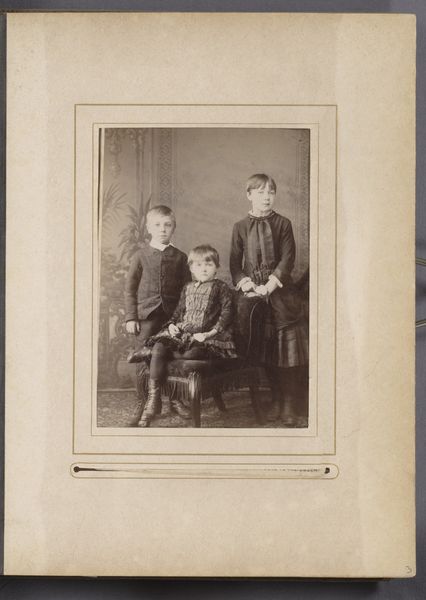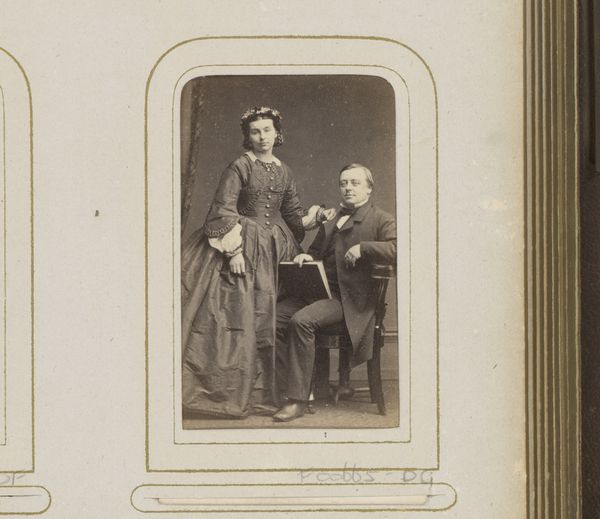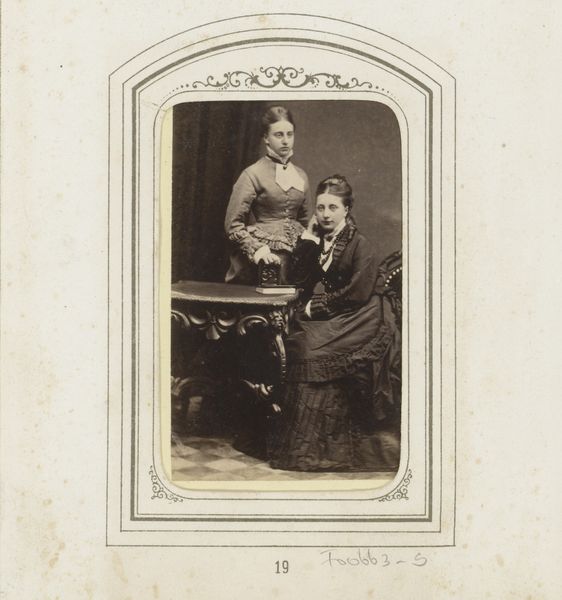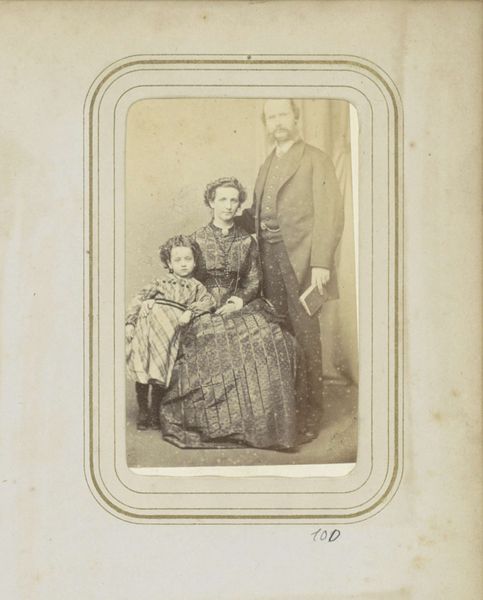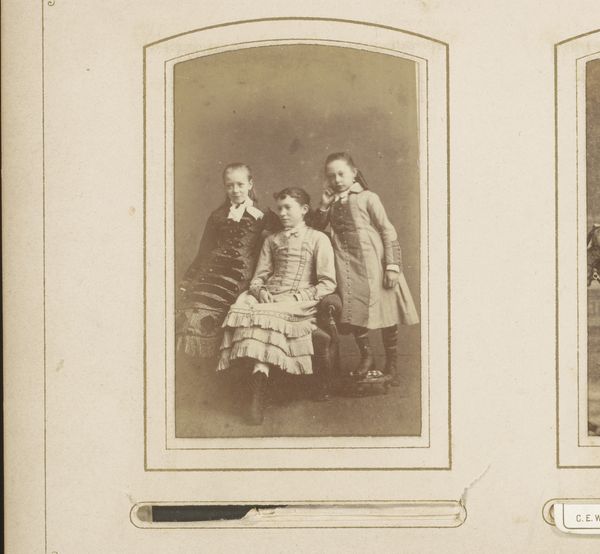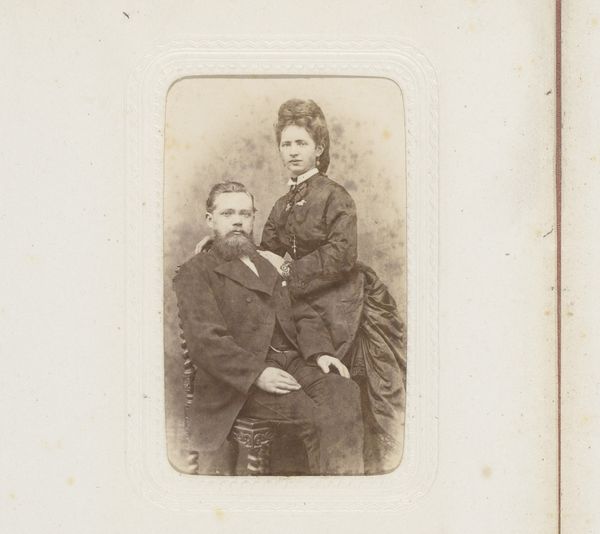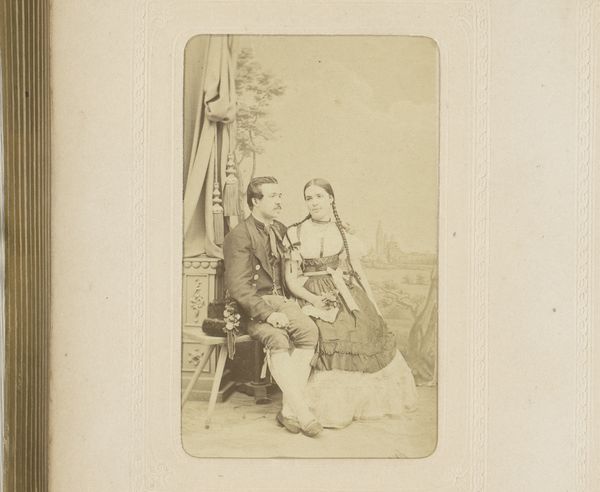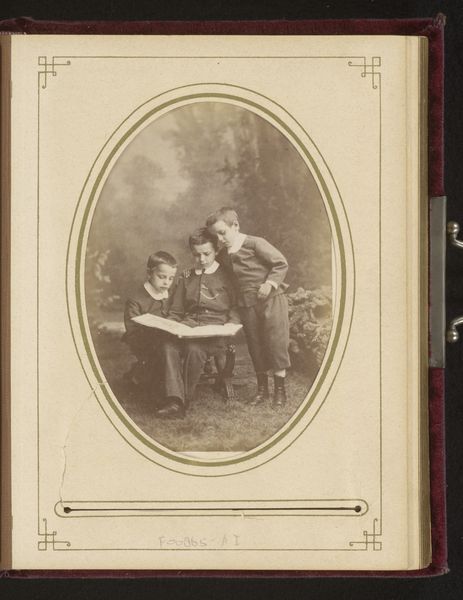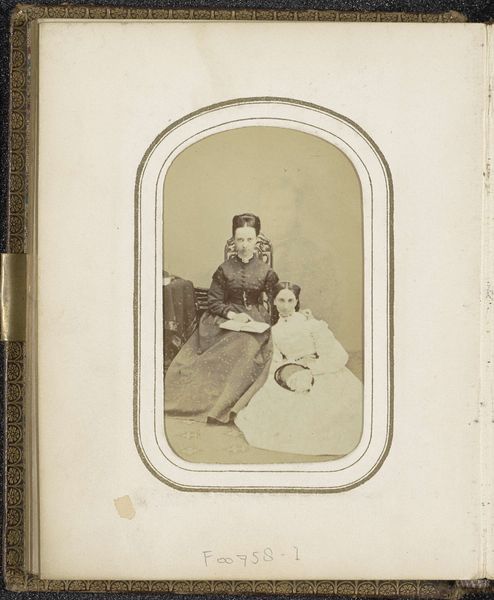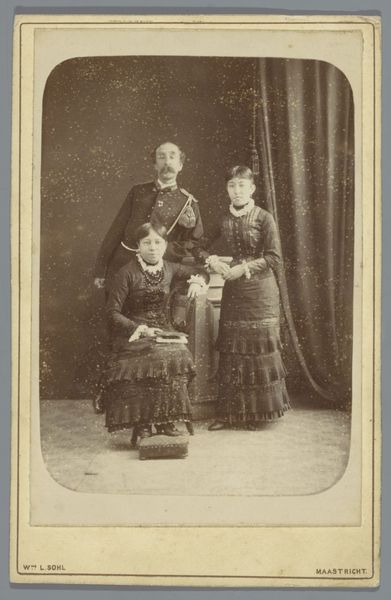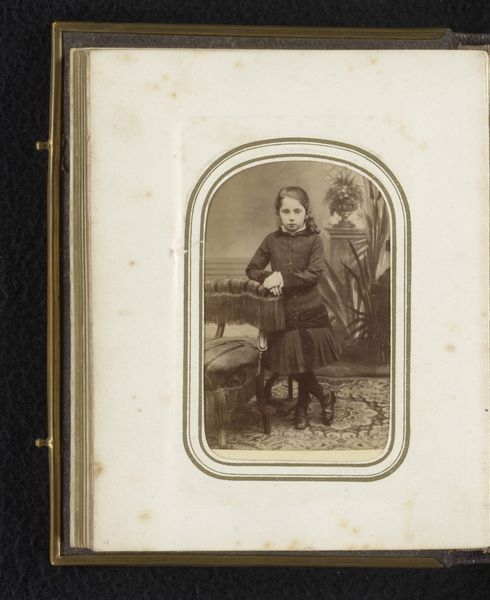
Portret van Napoleon III, keizer van Frankrijk, zijn vrouw Eugénie en hun zoon Napoleon IV 1862
0:00
0:00
Dimensions: height 85 mm, width 53 mm
Copyright: Rijks Museum: Open Domain
Curator: This photograph, taken around 1862, portrays Napoleon III, Emperor of France, along with his wife Eugénie and their son Napoleon IV. It is currently held at the Rijksmuseum. Editor: My initial impression is one of carefully constructed solemnity. The muted tones emphasize the formality of the composition. It feels staged, perhaps burdened by its own significance. Curator: Absolutely. Consider the socio-political implications here. Photography was becoming increasingly accessible, offering new avenues for projecting power and constructing dynastic narratives. The careful arrangement of the family embodies imperial stability—or at least, what they wished to project. Editor: The composition indeed underscores stability. Notice the central positioning of Napoleon III seated, suggesting authority, with his wife and son flanking him, creating a pyramidic form. The use of light and shadow, while limited by the technology of the time, accentuates his features, emphasizing his gravitas. Curator: Right, and look at their attire. Their dark clothing reinforces the somber mood. Yet, it’s more than just mourning garb; it conveys a sense of dignity and decorum befitting royalty. This representation is directly related to maintaining social control, promoting their imperial vision while eliding their political vulnerabilities. Editor: You’re suggesting a narrative deliberately curated for public consumption. From a purely visual perspective, there is an intriguing contrast in textures—the softness of Eugénie's dress against the stark backdrop, the controlled lighting to sculpt form. Curator: These images worked, though! This image allowed them to assert their influence and cement their place in history, at least in the visual memory of the time. Editor: Indeed. I find it remarkable how much is communicated through the careful orchestration of visual elements in such a small format photograph. It transcends merely documenting, becoming an exercise in deliberate construction and rhetoric. Curator: And for me, it reinforces how photography, even in its early stages, was never a neutral medium but always implicated in complex social and political power dynamics. A poignant reminder that images construct reality just as much as they reflect it.
Comments
No comments
Be the first to comment and join the conversation on the ultimate creative platform.

